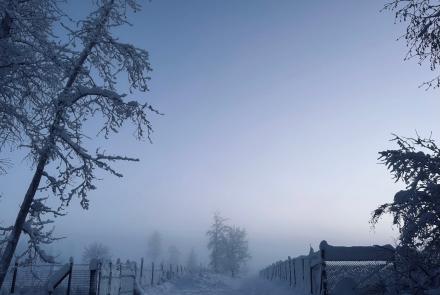
Geophysical Institute eligible for long-term defense research funding
The University of Alaska Fairbanks Geophysical Institute has received a Defense Department designation to research topics important to national security.
The department recently chose the Geophysical Institute to serve as a University Affiliated Research Center, with a charter to perform research focused on geophysical detection of nuclear detonations. It is one of only 17 centers in the country.
As a UARC, the Geophysical Institute is now eligible to receive long-term, sole-source funding from the Defense Department. The institute can continue to receive federal research funding through normal competitive procedures, when it is not in conflict with the UARC contract.
“I am especially pleased that UAF’s broad range of research and educational programs will benefit from the federal UARC status,” said UAF Chancellor Daniel White. “This aligns with the upcoming strategic plan effort that will include enhancing our research capabilities and expanding workforce training at UAF.”
The Geophysical Institute has a long history of monitoring nuclear weapons tests with infrasound and seismic sensors.
Since the mid-1960s, the Geophysical Institute has operated instruments that can detect, locate and classify nuclear detonations and other loud sounds using microphones sensitive to infrasound — sounds at frequencies below what humans can hear. The institute has performed infrasound research for years, studying noises emitted from volcanoes, meteors and the aurora.
Professor Charles “Buck” Wilson began research in nuclear proliferation at the Geophysical Institute shortly after the U.S., USSR and U.K. halted their above-ground nuclear testing programs under the 1963 Limited Test Ban Treaty.
That work picked up after the Comprehensive Nuclear-Test-Ban Treaty opened for signature in 1996. To help verify treaty compliance, Wilson, professor emeritus John Olson and senior engineer Daniel Osborne began building low-frequency acoustic stations to support U.S. efforts to detect clandestine atmospheric nuclear tests.
Since 2008, that work has expanded to support all aspects of geophysical nuclear treaty monitoring. These efforts have been funded by various U.S. defense agency contracts totaling nearly $50 million.
The University of Alaska established the Wilson Alaska Technical Center in May 2015 to oversee the growth of nuclear detonation detection research and development, and nuclear treaty verification. The center works with U.S. government agencies, national laboratories, academic institutions, companies and international organizations.
The new five-year UARC contract could be worth up to $46.7 million. The contract is managed by the Office of the Deputy Assistant Secretary of Defense for Threat Reduction and Arms Control.
The UARC initially will focus on the Wilson center’s activities but could expand to use the broader capabilities of the Geophysical Institute and UAF.
Sue Mitchell, 907-474-5823, semitchell@alaska.edu
Curt Szuberla, Wilson Alaska Technical Center director, 907-474-7347, caszuberla@alaska.edu





